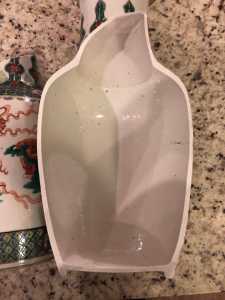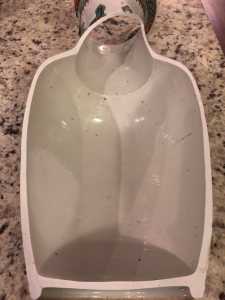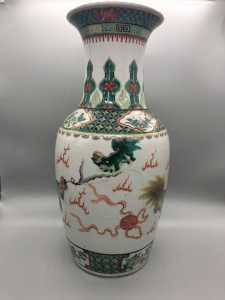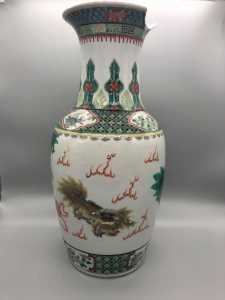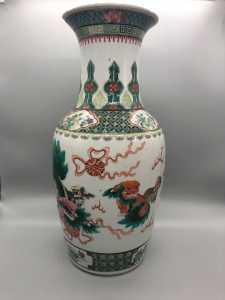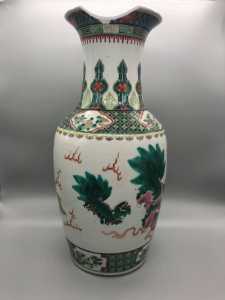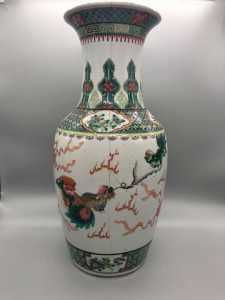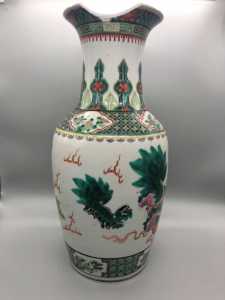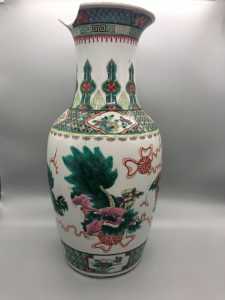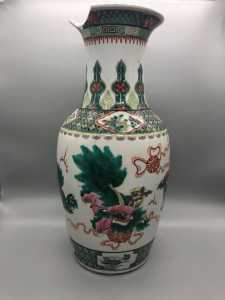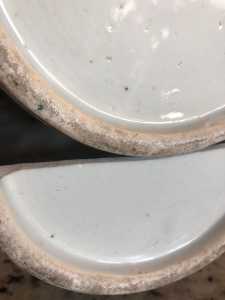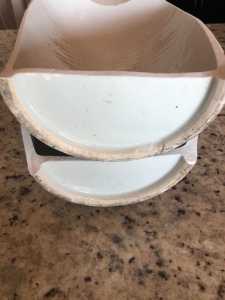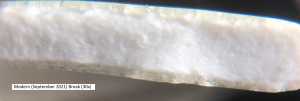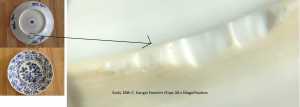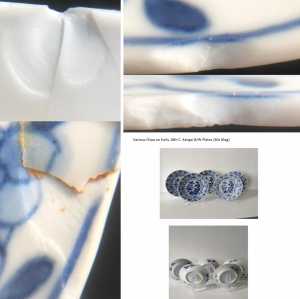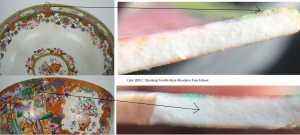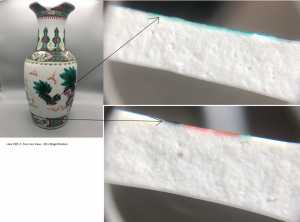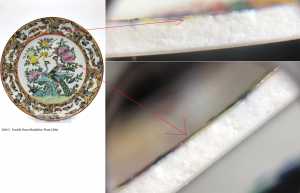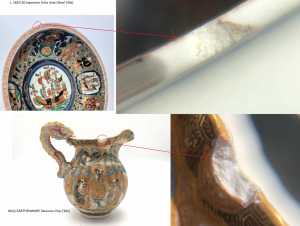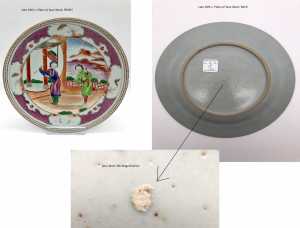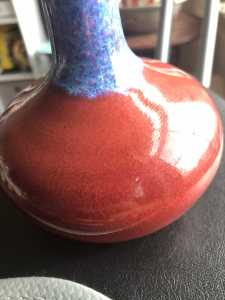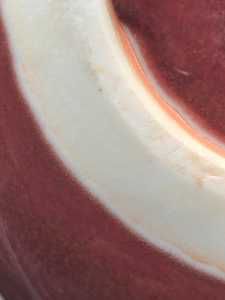The Chinese and Asian Art Forum. For Fans, Collectors and Dealers.
 Basic Rules For the BidAmount Asian Art Forum: Talk about whatever you want. You can even discuss and offer things that are for sale if they are authentic. Maximum image file size per post is 2 MB. Images of 700pxl x 700pxl are optimal if saved at a medium resolution. Be respectful of others and enjoy yourself. Click the YouTube link for a brief tutorial on using the forum. You can also EMBED Videos by cutting and pasting from You-Tube, Vimeo etc.
Basic Rules For the BidAmount Asian Art Forum: Talk about whatever you want. You can even discuss and offer things that are for sale if they are authentic. Maximum image file size per post is 2 MB. Images of 700pxl x 700pxl are optimal if saved at a medium resolution. Be respectful of others and enjoy yourself. Click the YouTube link for a brief tutorial on using the forum. You can also EMBED Videos by cutting and pasting from You-Tube, Vimeo etc.
NOTE: To post an item or add a new post, click open the category title from the FORUM LIST, and CLICK the Blue ADD TOPIC button.
Hi all,
I've been wanting to post this for a while. As some of you may know, I've started throwing pottery on the wheel recently. One of the things I've been taught is to cut my thrown pots in half to study the cross-section for errors and where there is room for improvement in my technique. It's not often you get to see and study a perfect cross-section of a 19th-century vase.
One issue many throwers have is that there is too much clay left at the bottom, resulting in a heavy vase, or very uneven walls, creating structural concerns down the line... These issues can be caused by pulling up the clay body at uneven speeds, or varying the turning speed of the wheel when pulling up, or maybe even putting uneven pressure while pulling, etc.. There's a misconception that I had that 19th-century Chinese porcelain decreased in quality during this stage, but look at how even the walls are. There is only a 1.5mm variation from the bottom of the vase to its widest part. (8mm to 6.5mm) Also, see the "floor" of the vase - it is the perfect width (6.5mm), and very even with the exception of a slight bump in the center, where the potter would've started to "open the floor" of the vase. Even so, it is a .5mm difference. These potters were clearly masters in their trade! Considering the fact that you don't know how thick a wall/floor is exactly unless you cut it in half, this is very impressive. Their experience is almost palpable.
Let me know if you'd like different angles/photos. I'm currently working on restoring this one.
I seriously appreciate the craftsmanship of this vase.
Apologies for inundating with posts today - I have a tendency to post in waves.
Kind regards,
John
Thank you John, that’s something I didn’t see before (or don’t wish to see if was my own vase). I have often thought that the potter has always given his best while the painter was often sloppy. It’s not the potters fault if he had lower quality clay to work with. In late Qing there are some incredibly badly painted items for the export market, Ebay is full of them. They used to think: why lose time in painting, the Westerners will buy it anyway. But the porcelain bodies are always well made.
Birgit
That's rather beautiful in its own right, John. I could see the two pieces, one showing the form, the other the decoration, framed and displayed. That was interesting to see, thank you.
Of course! I'm glad y'all enjoyed this as much as I did. I did try to show the decoration more, but it looks like I didn't add it. Luckily it was not an accidental break! I was just trying to stabilize it. I could hear the porcelain creaking whenever I moved it. The vertical line straight through the middle was very lucky!
Here's the little photoshoot I did before I dismantled it: (I recommend clicking the first photo and using the arrows)
Kind regards,
John
Workmanship at that time was outstanding in many regards. Just look at old furniture. It's rock solid. Thanks for sharing your insights.
@johnshoe Of course - I'm glad to share. I've never had the opportunity to handle old Chinese furniture yet, so I appreciate you bringing up their construction. That's not the initial thought I would have when looking at old Chinese chairs, for example. They look so fine, as pieces of art, that you forget they were utilitarian and built to be used. Especially given the flimsiness of some modern furniture!
@bartholin I was thinking of even old European and American furniture, which I have seen a bit of and usually strikes me as extremely well built from those earlier times. I have not been around much older Chinese furniture yet, but clearly it is very well built, as it can last hundreds of years and in some cases look almost brand new in terms of condition. It's astonishing.
I like the way the flames are rendered on your vase. Actually I like the whole thing. Can you show the base?
@johnshoe Interesting - I'll have to see what old furniture I can handle. I find that area very difficult, so I've been hesitant about diving in to that. Even with all of the interesting posts here on Chinese furniture, I feel lost.
Here's the photos! I actually got this vase from our friend, Tim, during his blind auction. I couldn't resist the variety of foo lions on it. I'm practicing restoration on a mandarin punch bowl and a kutani censer, so I can actually make this one as perfect as possible.
@bartholin Nice! Well that's not surprising, as Tim has a good eye and finds great things. Congratulations. And that's good you are getting into repairing. Maybe when you get your chops down we can all start hiring you to fix up our things as well!
Thank you, John! I agree - he finds wonderful things. I will certainly update you all when I'm able to do restorations at a higher level! The Gotheborg forum has actually been an amazing resource for trying different techniques.
I'm going to shoot you an email re: restorations, just since I'm also working on a few pieces....
This is a very interesting post, it has always intrigued me when buying broken pieces, what the quality is of the body and the way the glazes/enamels are layered. I had a beautifully formed late Qing bowl, flawless in form that had the ugliest enamel work, so ugly I in fact suspect the artist may have been drunk, but the body was so perfect, the foot was trimmed with such precision I could have sworn it was an imperial ware. I will look for photos, though this was maybe ten years ago, I ended up giving it to my friend who collects oddities, and I believe it broke.
Jeremy
Sounds good, Jeremy! Looking forward to it.
Since you mentioned it, I'm also interested in the magnification of these cross sections. I'll take some magnified photos of various pieces and provide them here later tonight. It might be fun to compare those 😀 My years in laboratories taking photos through microscopes will pay off soon. I'll do that in my light box too.
Hi all,
As promised, here's some close-up photos of the breaks I was able to take photos of. You can really see how finely-levigated the Kangxi porcelain is beneath the glaze. It's very smooth to the touch. You can see how it gets progressively more and more coarse and gritty over time. Also posted a modern porcelain break for example. It's especially interesting that this modern clay is still not at the level of Kangxi porcelain. I'm having trouble seeing a difference in thickness for glazing or enamelling, though.
Also posted an odd spur mark on a Qianlong plate. It's very gray and not see through... is this what is considered "soft-paste"?
Kind regards,
John
Just as a challenge for anyone, guess the age of this piece:
Kind regards,
John
@bartholin Spurs where clay not porcelain. This is probably the contrast you are seeing.
Thanks for visiting "The BidAmount Asian Art Forum | Chinese Art"
If you sell on eBay, or have a shop feel free to post images and descriptions and links.
Check back often for discussion about the latest news in the Chinese art and antique world. Also find out about the latest Asian art auctions at Sotheby's, Christie's, Bonhams and Tajans.
Auction results for: fine porcelain, ceramics, bronze, jade, textiles and scholar's objects. As well as Japanese, Thai, Vietnamese and other Asian cultures.
Thank you,
Peter Combs
Topics and categories on The BidAmount Asian Art Forum | Chinese Art
Kangxi vases, Kangxi dishes and chargers, Kangxi ritual pieces, Kangxi scholar's objects, Qianlong famille rose, Qianlong enamels, Qianlong period paintings, Qianlong Emporer's court, Fine porcelain of the Yongzheng period. Chinese imperial art, Ming porcelain including Jiajing, Wanli, Xuande, Chenghua as well as Ming jades and bronzes.
The BidAmount Asian Art Forum | Chinese Art
A free Asian art discussion board and Asian art message board for dealers and collectors of art and antiques from China, Japan, Korea, Thailand, Cambodia, Vietnam and the rest of Asia. Linked to all of the BidAmount Asian art reference areas, with videos from plcombs Asian Art and Bidamount on YouTube. Sign up also for the weekly BidAmount newsletter and catalogs of active eBay listing of Chinese porcelain, bronze, jades, robes, and paintings.
The art of calligraphy - and for the ancient Chinese it certainly was an art - aimed to demonstrate superior control and skill using brush and ink. Calligraphy established itself as one of the major Chinese art forms during the Han dynasty (206 BCE - 220 CE), and for two millennia after, all educated men were expected to be proficient at it.
The Museum’s collections of Asian art span nearly five millennia and encompass the cultures of China, the Himalayas, India, Japan, Korea, and Southeast Asia. In 2007, the Museum launched an initiative to create dedicated galleries for the collection, beginning with a gallery for the arts of Korea ...
Chinese art is full of symbolism, in that artists typically seek to depict some aspect of a totality of which they are intuitively aware.
China Online Museum is the finest online museum of Chinese art. It features Chinese calligraphy, painting, ceramics, bronzes, carving, and other artworks.
Chinese Ceramics & Works of Art. Overview Upcoming auctions Contacts Auction results ... Christie’s sales of Chinese ceramics and works of art showcase centuries of Chinese history. Held throughout the year in London, New York, Paris and Hong Kong, they attract a wide audience of collectors and connoisseurs vying for pieces as diverse as ...
Explore Asian Art Week. Contact the Specialist Department. Chinese Paintings ... Senior Specialist, Head of Sale. [email protected]. Tel:+1 212 641 5760. Bid in-person or online for the upcoming auction:Fine Chinese Paintings on 10 September 2019 at New York. Bid in-person or online for the upcoming auction:Fine Chinese Paintings on 10 ...
Discover an abundance of must-see art from all corners of a vast continent at Christie’s NY Asian Art Week. From contemporary classical and Chinese paintings to works with exemplary provenance from the Art Institute of Chicago, our Rockefeller Paza galleries will be full of ancient treasures and contemporary masterworks in a salute to the vibrant arts of Asia.
Sold to benefit The Art Institute of Chicago’s Asian Art Acquisition Fund, the sale features 84 lots with a focus on Ming and Qing porcelains, and offers a rare insight into the taste for collecting Chinese ceramics and works of art in the Midwest from the end of the 19th century through the 1980s. Highlights include two Wanli wucai garlic-head vases, a Qianlong mark and period, blue and ...
Specialist, Chinese Paintings, Christie's London Dr Malcolm McNeill is a Specialist in Chinese Paintings at Christie’s, based in London. He previously worked as an assistant curator of the Chinese collections and the Victoria and Albert Museum in London, as a researcher at the British Museum, and as a translator and tour guide at the National Palace Museum in Taipei.
The Christie's Education 2020 Conference: The Chinese Art Market 18 Jun 2019 Christie’s Education is delighted to announce our first international academic conference in Asia which will take place in Hong Kong from 26-27 November 2020 at the Hong Kong Convention and Exhibition Centre and will run in parallel with Christie’s Hong Kong Autumn Auctions.
The summer Chinese Art sale in Hong Kong will feature works of art from several private collections, including Qing porcelains and textile from the collection of the legendary Chinese art dealer A. W. Bahr (1877–1959), fine gilt bronze Buddhist sculptures from an old Hong Kong collection, an East Asian collection of Qing dynasty wine cups and jades, and a Japanese collection of Song ceramics ...
Sotheby's Chinese Works of Art Department holds two auctions each year in London, New York, Hong Kong and Paris.
Chinese Art - View Auction details, bid, buy and collect the various artworks at Sothebys Art Auction House.
With more than 340 Chinese works of art dating from the Neolithic to the Republic periods, highlights of this sale include a selection of Qing Imperial monochromes from the collection of Arnold and Blema Steinberg, early ceramics from the Art Institute of Chicago and Chinese porcelain and works of art from the collection of Henry Arnhold.
Results: Sotheby's Asia Week achieved $52.4 million in six strong auctions, exceeding pre-sale estimates. With 76.5% of lots sold and 60.3% of lots surpassing high estimates, the Asian art sales at Sotheby's indicate continued collector interest in the finest works of art from China, India and and the Himalayas.
Today's sale of Important Chinese Art will proceed as planned with sessions at 10 AM and 2 PM EDT. Sotheby's will be monitoring the weather conditions throughout the day and will be available to coordinate alternative bidding options should conditions make it difficult for clients to attend the auction in person.
Bonhams Chinese Art department is renowned for offering the finest works of art representing the richness and breadth of China's artistic heritage, particularly Imperial porcelain, white and spinach green jades, cloisonné and Buddhist art. Specialised international auctions are held globally, including London, Hong Kong and San Francisco.
Bonhams : Chinese Works of Art We use cookies to remember choices you make on functionality and personal features to enhance your experience to our site. By continuing to use our site you consent to the use of cookies. Please refer to our privacy and cookie policies for more information.
Bonhams Fine Art Auctioneers & Valuers: auctioneers of art, pictures, collectables and motor cars. We use cookies to remember choices you make on functionality and personal features to enhance your experience to our site. By continuing to use our site you consent to the use of cookies. ... Chinese Art (US) General enquiries
Bonhams : Fine Chinese Art We use cookies to remember choices you make on functionality and personal features to enhance your experience to our site. By continuing to use our site you consent to the use of cookies. Please refer to our privacy and cookie policies for more information.
Bonhams Fine Art Auctioneers & Valuers: auctioneers of art, pictures, collectables and motor cars Bonhams : Asian Art We use cookies to remember choices you make on functionality and personal features to enhance your experience to our site.
Bonhams are international auctioneers of fine Chinese and Japanese art. We specialise in rare Imperial and Export Chinese ceramics and works of art, as well as Japanese ceramics, fine and decorative works of art from the Neolithic Period to the 20th century. View on map
Bonhams Fine Art Auctioneers & Valuers: auctioneers of art, pictures, collectables and motor cars. We use cookies to remember choices you make on functionality and personal features to enhance your experience to our site. By continuing to use our site you consent to the use of cookies. ... Asian Art Bonhams. Work. 22 Queen St.
